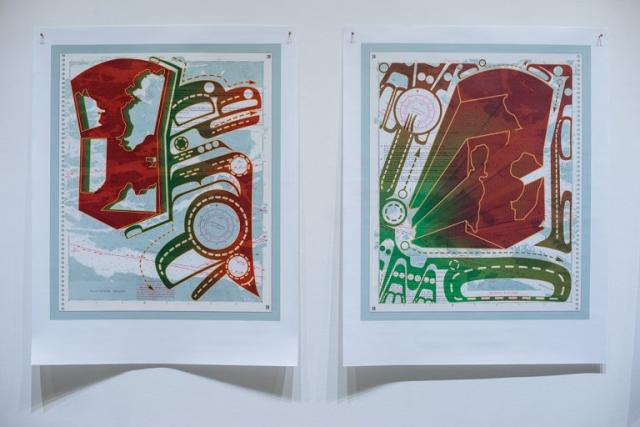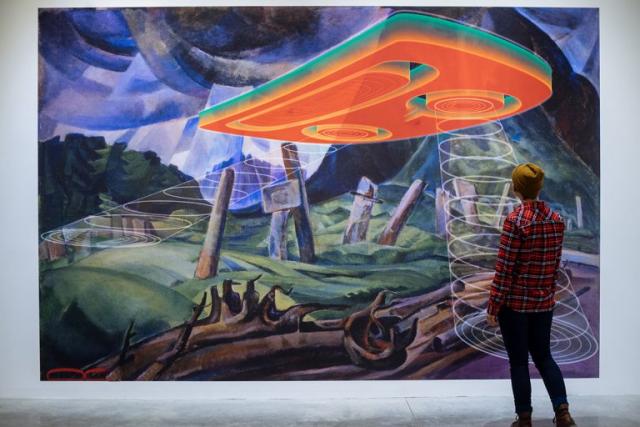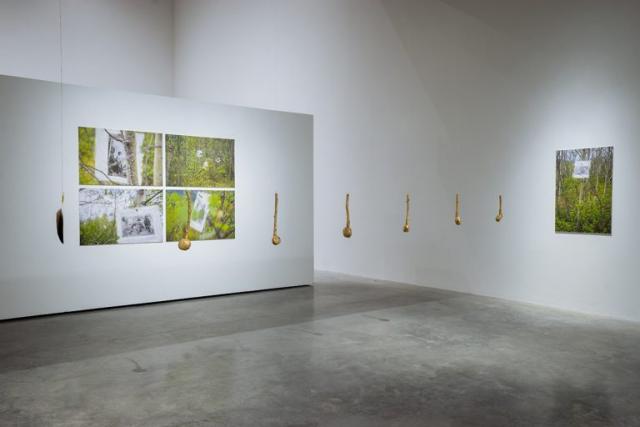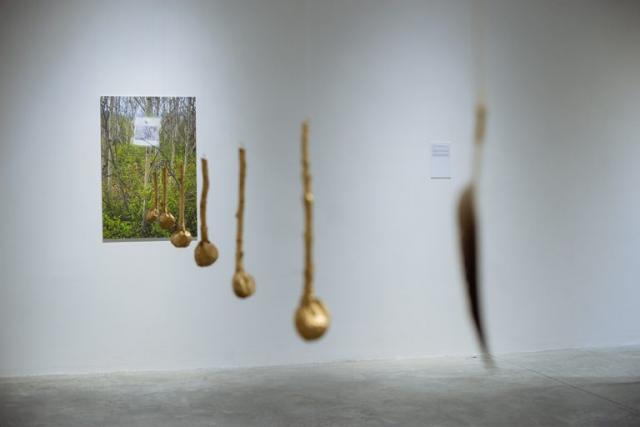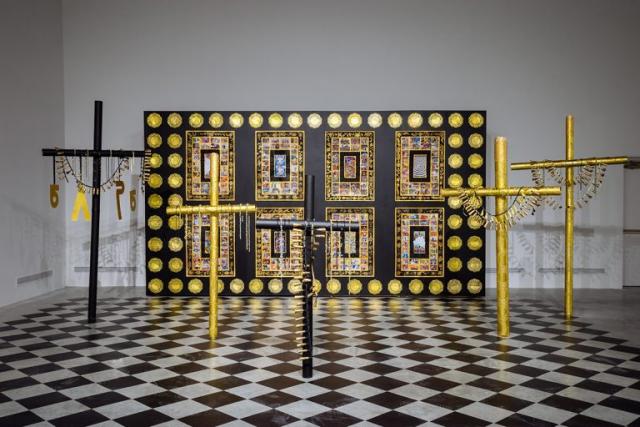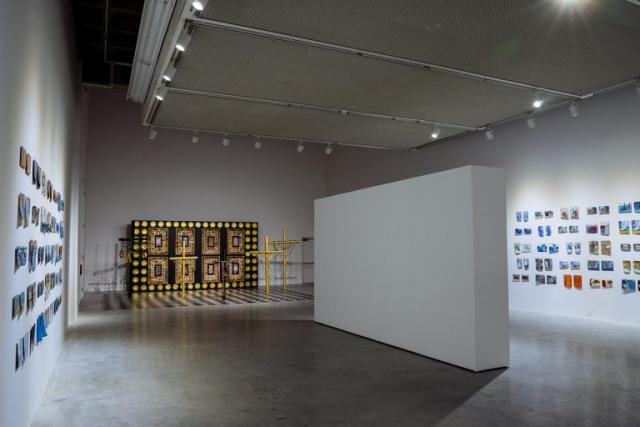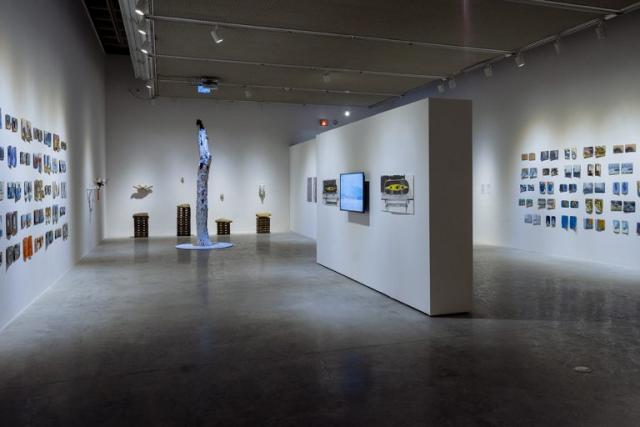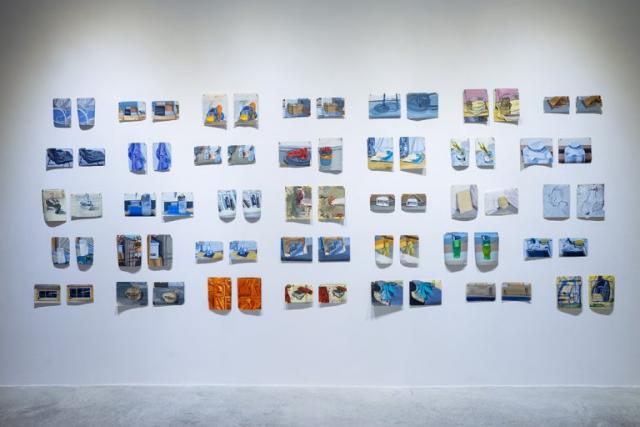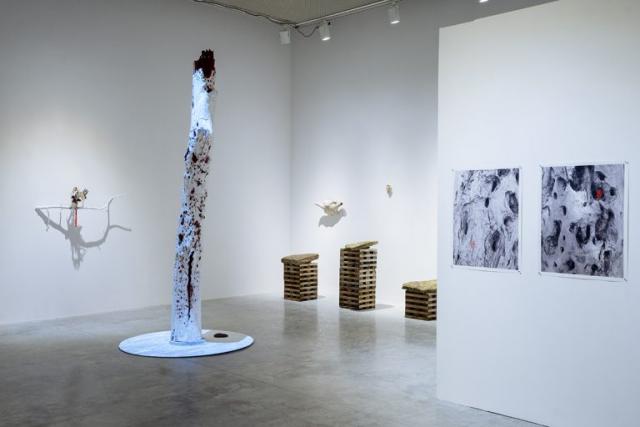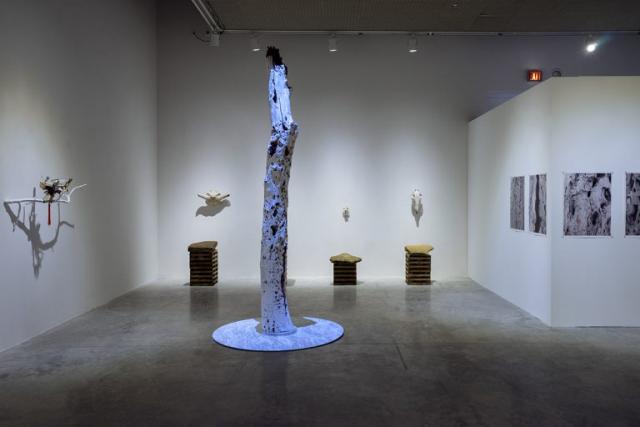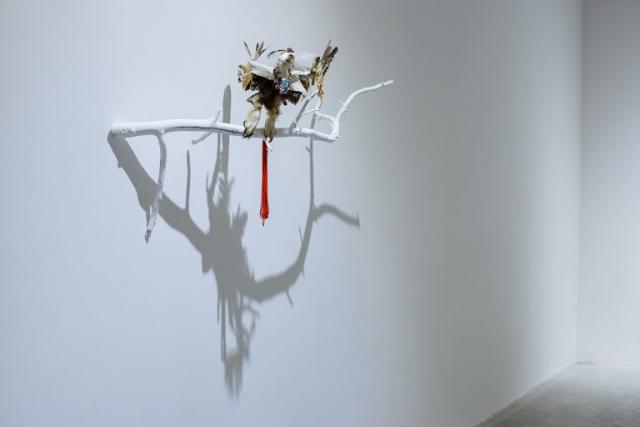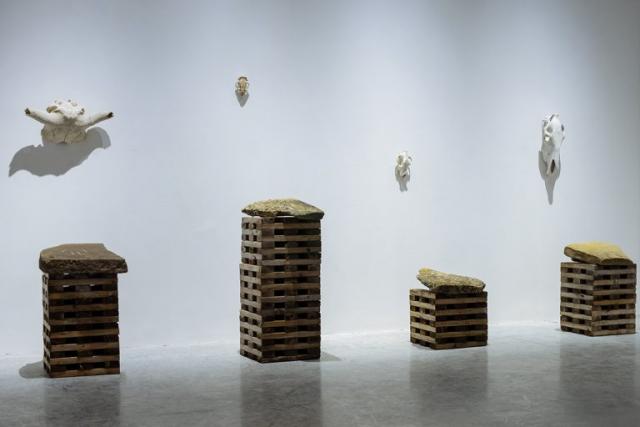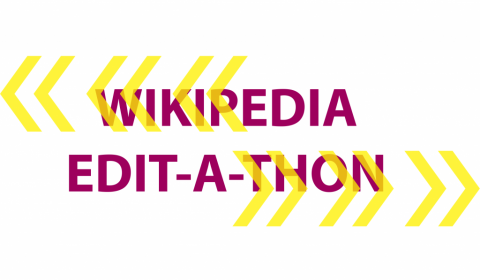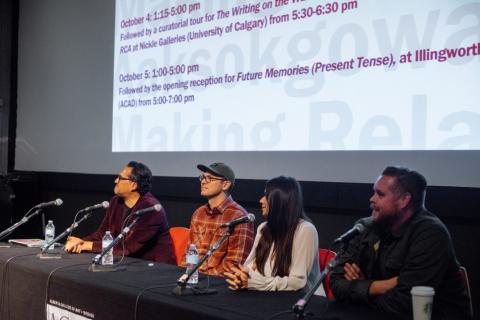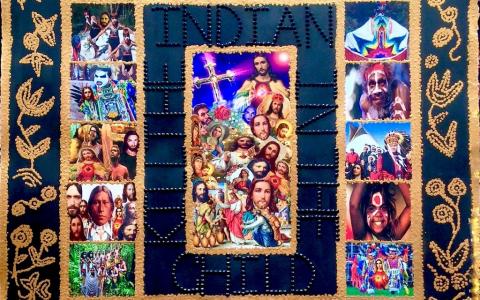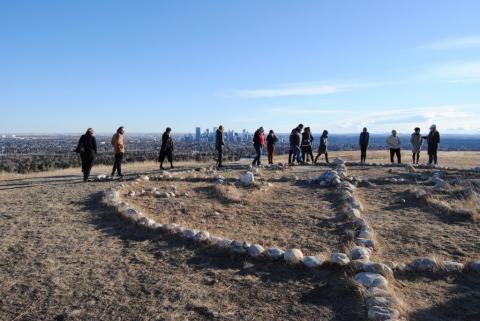
Exhibition
6 Oct 2017 - 2 Dec 2017
OPENING RECEPTION
Thursday October 5, 2017
5 – 7pm
GALLERY HOURS
Tues – Fri, 12 – 6 pm
Sat, 12 – 4 pm
Future Memories (Present Tense)
Future Memories (Present Tense) brings together six contemporary Indigenous artists from different regions of Canada, whose work diversely challenges linear ideas of time through story-telling.
SONNY ASSU, MARK IGLOLIORTE, MERYL MCMASTER, PETER MORIN, ROLANDE SOULIERE, ADRIAN STIMSON
Future Memories (Present Tense) brings together six contemporary Indigenous artists from different regions of Canada, whose work diversely challenges linear ideas of time through story-telling. Each artwork uniquely relates to the theme by either surfacing silenced narratives, deconstructing current dominant narratives, or imagining a past yet to be. The exhibition considers how history, tradition, and personal narratives inform the construction of one’s own cultural identity as this fluctuates and re-arranges itself continuously. The authorial voices included in the selection not only open a window on how Indigenous communities and individuals wish to represent and project themselves today, but construct new scenarios, give shape to a possible future, poetically and politically rethinking our society in relation to selfhood.
Sonny Assu (Liǥwildaʼx̱w of the Kwakwaka’wakw Nations) was raised in North Delta, BC, over 250 km away from his home ancestral home on Vancouver Island. Having been raised as you “everyday average suburbanite” it wasn’t until he was eight years old that he discovered his Liǥwildaʼx̱w/Kwakwaka’wakw heritage. Later in life, this discovery would be the conceptual focal point of his contemporary art practice. His practice is diverse, exploring multiple mediums and materials to negotiate Western and Kwakwaka’wakw principles of art making. His work often often explores his family history as a way shed light on Canada’s hidden history and treatment of the First People. Assu received his BFA from the Emily Carr University in 2002 and his MFA from Concordia University in 2017. He has been awarded Emily Carr University’s distinguished alumni award (2006); the BC Creative Achievement Award in First Nations Art (2011) and is a 2017 Laureate for the REVEAL – Indigenous Art Awards. He currently resides in unceded Liǥwildaʼx̱w territory (Campbell River, BC).
Mark Igloliorte is an interdisciplinary artist of Inuit ancestry from Nunatsiavut, Labrador. His artistic work is primarily painting and drawing. In 2017 Igloliorte received a REVEAL Indigenous Art Award from the The Hnatyshyn Foundation. His work has been shown nationally and internationally with work of international contemporary artists: Francis Alys, Janet Cardiff and George Bures Miller, Peter Doig, Peter Fischli and David Weiss. Further, Igloliorte has been profiled in features by Canadian Art Magazine and Inuit Art Quarterly.
Meryl McMaster is an Ottawa-based artist and holds BFA in Photography from OCAD University. Her work has been included in exhibitions throughout Canada, the United States and UK, including the Smithsonian’s National Museum of American Indian, the Art Gallery of Ontario, Prefix Institute of Contemporary Art, the Eiteljorg Museum, the Ottawa Art Gallery, the Museum of Contemporary Native Arts, McMichael Canadian Art Collection, the Mendel Art Gallery and the Art Gallery of Greater Victoria. She currently has a solo touring exhibition across Canada titled “Confluence” traveling until 2018. McMaster is the recipient of the REVEAL Indigenous Art Award, Charles Pachter Prize for Emerging Artists, the Canon Canada Prize, the Eiteljorg Contemporary Art Fellowship, the OCAD U Medal and was long listed listed for the 2016 Sobey Art Award. Her work has been acquired by various public collections within Canada and the United States, including the Canadian Museum of History, the Art Gallery of Ontario, the Eiteljorg Museum, National Museum of the American Indian, the Ottawa Art Gallery, the Nelson-Atkins Museum of Art and Indigenous and Northern Affairs Canada.
Peter Morin is a Tahltan Nation artist, curator, and writer. Morin completed his studies at Emily Carr University of Art and Design in 2000 and completed his MFA at UBC Okanagan in 2011. In his artistic practice, along with his curatorial work, Morin explores issues of de-colonization through an embodied practice of Tahltan epistemological tradition. This work takes the form of performance interventions, installation, singing, and includes object and picture-making. Morin has participated in numerous group and solo exhibitions across Canada and was long-listed for the Sobey Art Prize in 2014. Morin is an Assistant Professor with the Visual and Aboriginal Department at Brandon University.
Rolande Souliere became a contemporary visual artist when she migrated to Australia in 1998. Living between Australia and Canada has highlighted the common political interests, the shared struggles and historical memory of colonialism of Indigenous people on a global level. Souliere’s practice is anchored in addressing Indigenous histories that have either been silenced, misrepresented and or hidden within western academic and socio-political discourses. To address these Souliere uses mass-manufactured goods that she manipulates using traditional First Nation processes such as threading, stacking, binding and patterning. When asked why she uses the assisted readymade, Souliere replies “its faster, saves time and money”. Among Souliere’s well-known installations are the ones constructed from street barrier and caution tape to address Indigenous land claims, infrastructural intervention and economic growth with the oncoming of colonial settlement. Souliere continues to experiment with new materials and processes as a visual means to raise awareness of Indigeneity – locally, nationally and internationally.
Adrian Stimson is a member of the Siksika (Blackfoot) Nation. He has a BFA with distinction from the Alberta College of Art and Design and MFA from the University of Saskatchewan. He considers himself as an interdisciplinary artist; he exhibits nationally and internationally. His paintings are primarily monochromatic, they primarily depict bison in imagined landscapes, they are melancholic, memorializing, and sometimes whimsical, they evoke ideas cultural fragility, resilience and nostalgia. The British Museum recently acquired two paintings for their North American Indigenous collection. His performance art looks at identity construction, specifically the hybridization of the Indian, the cowboy, the shaman and Two Spirit being. Buffalo Boy, The Shaman Exterminator are two reoccurring personas. He is also known for putting his body under stress, in White Shame Re-worked, he pierced his chest 7 times, recreating a performance originally done by Ahasiw-Muskegon Iskew, crawled across the desert in 110 degree heat for What about the Red Man? For Burning Man’s The Green Man and recently dug a TRENCH in a five-day durational performance sunrise to sunset. His installation work primarily examines the residential school experience; he attended three residential schools in his life. He has used the material culture from Old Sun Residential School on his Nation to create works that speak to genocide, loss and resilience. His photography includes collodion wet plate portraits, performance dioramas and war depictions. His sculpture work has been primarily collaborative; he has worked with relatives of Murdered and Missing Women to create Bison Sentinels and with the Whitecap Dakota Nation in creating Sprit of Alliance a monument to the War of 1812. He was a participant in the Canadian Forces Artist Program, which sent him to Afghanistan. He was awarded the Blackfoot Visual Arts Award in 2009, the Queen Elizabeth II Golden Jubilee Medal in 2003, the Alberta Centennial Medal in 2005 and the REVEAL Indigenous Arts Award –Hnatyshyn Foundation



